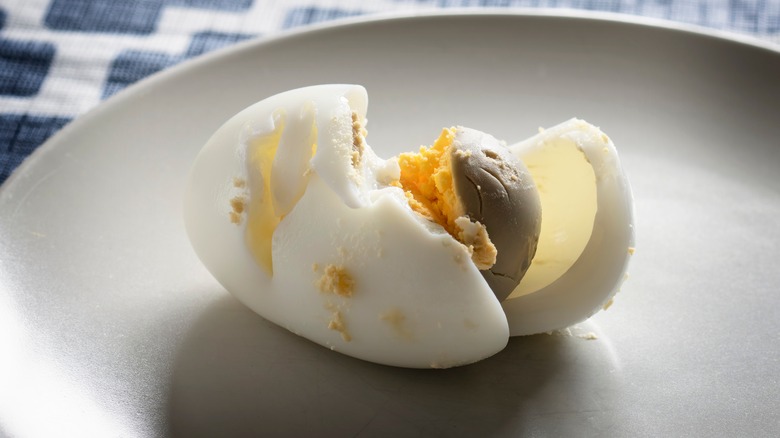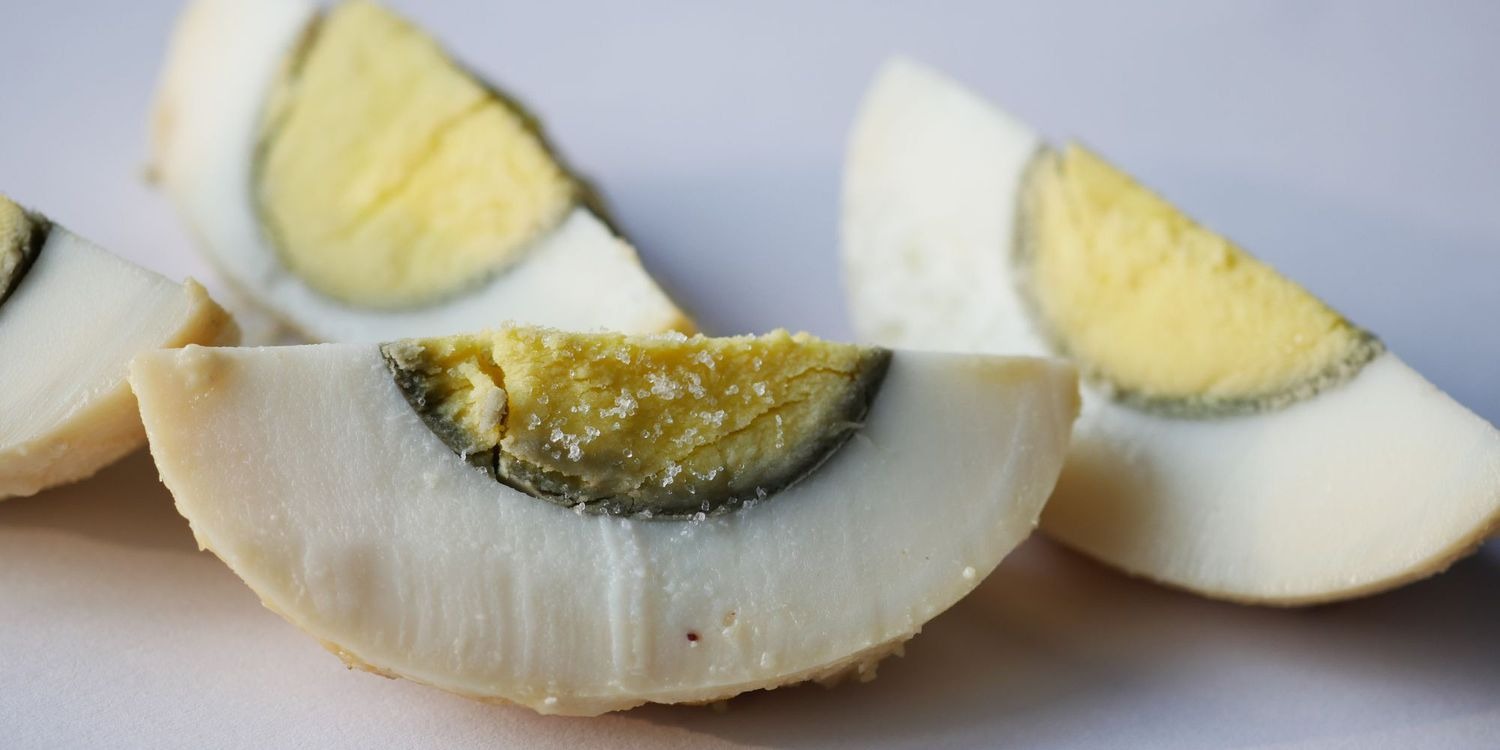Hard-boiled eggs are one of the most popular and convenient protein sources in the world. They’re used in breakfast meals, salads, sandwiches, and even appetizers. Yet, despite being easy to prepare, a common issue often surprises many home cooks: a greenish-gray ring around the yolk. This unexpected discoloration can raise questions—Is the egg spoiled? Is it still safe to eat? Did something go wrong during cooking?
In this article, we’ll explain why that green ring forms, how to prevent it, whether it’s safe to eat, and how it might even affect the nutritional quality of your eggs.
What Causes the Green Ring Around Egg Yolks?

The green ring that sometimes appears around the yolk of a hard-boiled egg is the result of a chemical reaction. It occurs when sulfur from the egg white reacts with iron from the yolk. This typically happens during overcooking or when the eggs are exposed to high heat for too long.
Specifically, when eggs are boiled for too long or at too high a temperature, sulfur compounds in the white begin to break down. These compounds then migrate toward the yolk, where they interact with iron to form ferrous sulfide—a substance with a green or grayish color.
This ring forms precisely where the white meets the yolk, as that’s where the sulfur and iron meet. It’s more prominent in older eggs or when eggs are not cooled quickly after cooking.
Is It Safe to Eat a Hard-Boiled Egg with a Green Ring?
Yes, eggs with a green ring around the yolk are completely safe to eat. The discoloration is not a sign of spoilage, contamination, or poor quality. It’s purely a cosmetic issue that occurs due to how the egg was cooked.
The flavor may change very slightly, especially if the egg is significantly overcooked and the whites turn rubbery, but there is no health risk involved. In fact, many people consume eggs with a green ring regularly, especially in dishes like potato salad or deviled eggs.
If you’re preparing eggs for visual presentation, such as garnishing dishes or making deviled eggs for a party, you may want to avoid the ring for aesthetic reasons. Otherwise, there’s no need for concern.
Common Cooking Mistakes That Cause the Green Ring

To understand how to avoid the green ring, it helps to identify what mistakes cause it:
-
Overboiling the eggs: Cooking eggs longer than necessary increases the chance of sulfur-iron reactions.
-
Using very high heat: Vigorous boiling creates uneven cooking and overheating.
-
Not cooling eggs quickly: Failing to transfer eggs to cold water after cooking allows residual heat to continue the chemical reaction.
-
Using very fresh eggs: Fresh eggs are harder to peel and may require longer cooking times, which increases risk of overcooking.
How to Prevent the Green Ring from Forming

Preventing the green ring is straightforward if you follow some simple cooking practices.
1. Control the Cooking Time
Avoid cooking eggs for more than 9–12 minutes, depending on size and desired doneness. For large eggs, the sweet spot is around 10 minutes if you’re aiming for fully set yolks without overcooking.
2. Start with Cold Water
Place the eggs in a pot and cover them with cold water by about an inch. This allows for gradual temperature increase and even cooking.
3. Use the “Bring to Boil and Rest” Method
Bring the water to a boil over medium-high heat. Once it reaches a rolling boil, remove the pot from heat, cover it with a lid, and let it sit for 10–12 minutes. This method uses residual heat to cook the eggs gently.
4. Use an Ice Water Bath
Immediately after cooking, transfer the eggs to a bowl of ice water. Let them sit for at least 5–10 minutes. This halts the cooking process, prevents overcooking, and makes peeling easier.
Tips for Making Perfect Hard-Boiled Eggs

-
Use eggs that are 7 to 10 days old for easier peeling.
-
Don’t crowd the pot. Eggs should fit in a single layer with enough room for even heat circulation.
-
After cooling, store eggs in the fridge for up to one week.
-
To peel easily, gently tap the egg on a hard surface and roll it before peeling under running water.
Beyond Breakfast: Popular Uses for Hard-Boiled Eggs
Hard-boiled eggs are incredibly versatile and appear in many global dishes:
-
Egg salad: A creamy mix of chopped eggs, mayonnaise, mustard, and spices.
-
Nicoise salad: A French classic featuring hard-boiled eggs, tuna, olives, and green beans.
-
Cobb salad: A hearty American salad with bacon, blue cheese, avocado, and egg.
-
Ramen eggs: Soft- to medium-boiled eggs marinated in soy sauce, perfect for ramen bowls.
-
Scotch eggs: British comfort food—boiled eggs wrapped in sausage and breadcrumbs, then fried.
-
Deviled eggs: A popular appetizer where yolks are mixed with mayo, mustard, and spices, then piped back into halved whites.
Does the Green Ring Affect Nutrition?

Cooking eggs at very high heat for long periods may lead to slight degradation of heat-sensitive nutrients, such as vitamin B1 (thiamine) and folate. However, these losses are generally minimal.
The green ring itself doesn’t remove or alter any essential nutrients in a significant way. The egg still remains a good source of protein, healthy fats, vitamins D, A, B12, and choline—important for brain health.
Egg Myths: Debunking Common Misconceptions
Myth #1: The green ring means the egg is rotten.
Not true. Rotten eggs smell bad and have a distinct sulfurous odor. The green ring is simply a cooking artifact.
Myth #2: Brown eggs are less likely to get a green ring.
Also false. The color of the shell (white or brown) is determined by the breed of chicken and has no impact on cooking chemistry.
Myth #3: The green ring is toxic.
Nope. Ferrous sulfide may not look tasty, but it’s not harmful in small amounts as found in boiled eggs.
Conclusion
The green ring around the yolk of a hard-boiled egg might be a visual inconvenience, but it’s not a cause for alarm. It is the result of a harmless chemical reaction caused by overcooking and improper cooling. By following simple tips—like using the cold-start method, timing your boil, and cooling the eggs promptly—you can consistently achieve eggs with bright yellow yolks and no gray ring.
So the next time you spot that telltale green edge, remember: it’s a sign to tweak your cooking technique—not throw out your breakfast.
